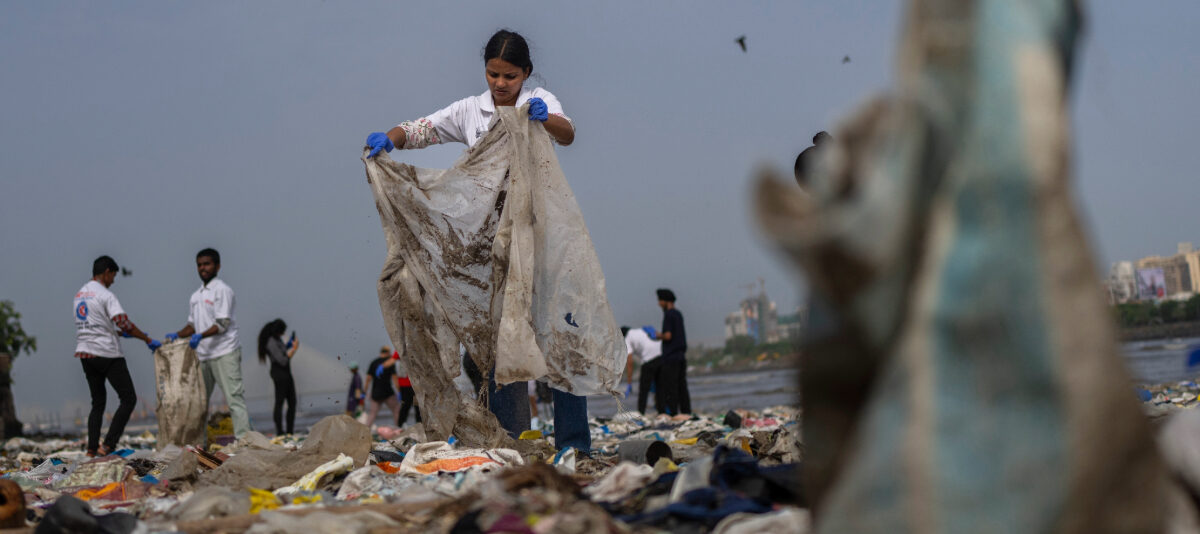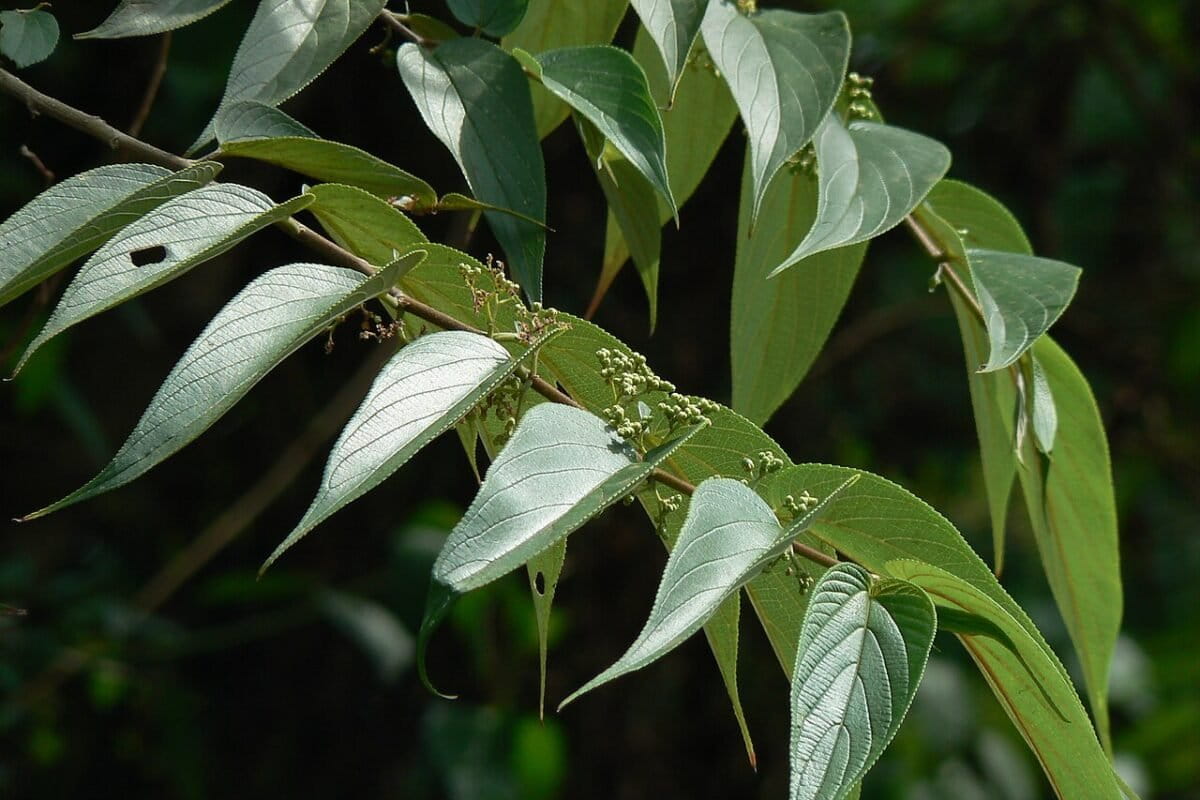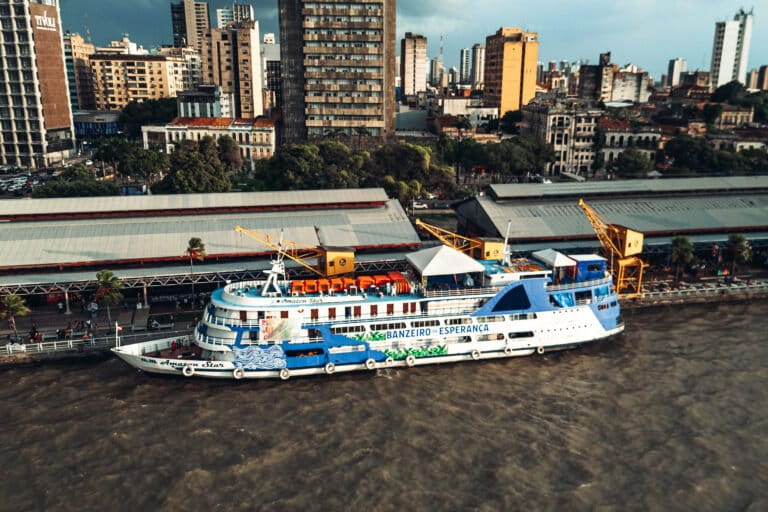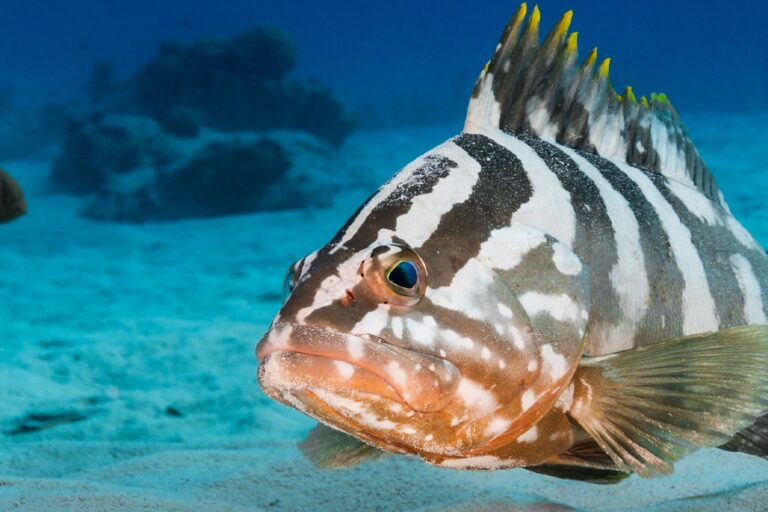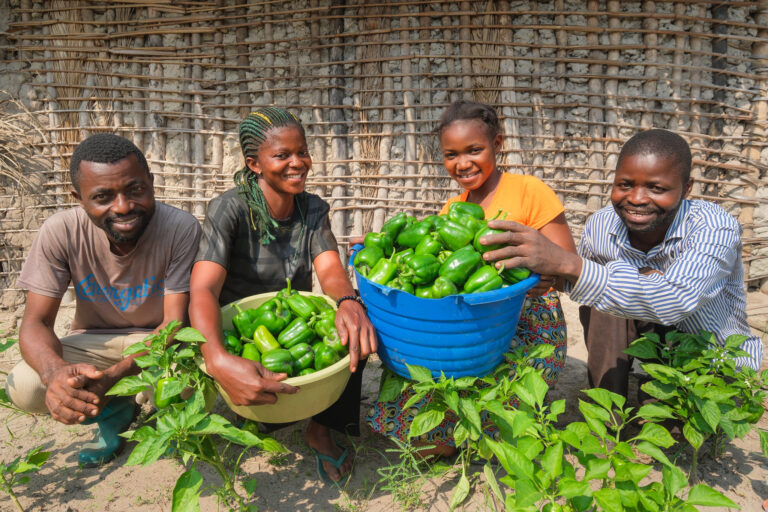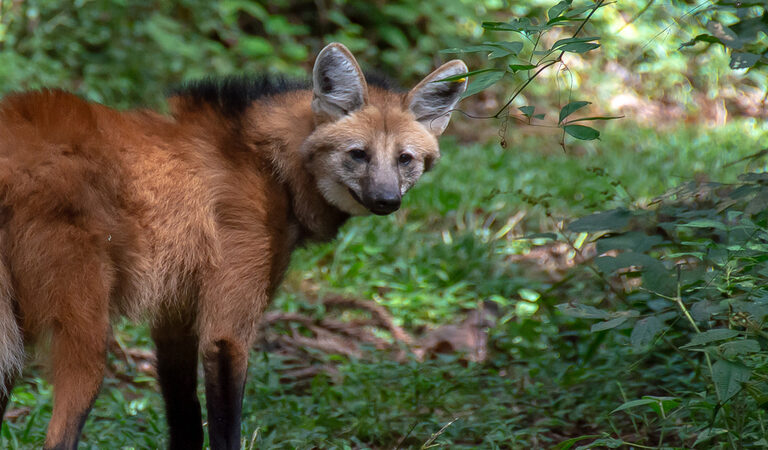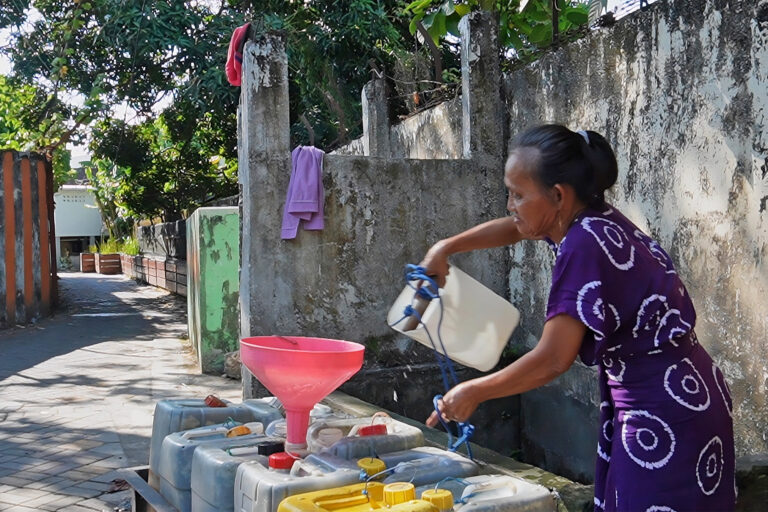
National Geographic photos show how large the so-called flowline corridor really is. Photo © Karla Gachet. Click to enlarge.
When the Ecuadorian government approved permits for an oil company to drill deep in Yasuni National Park—an area known as Block 31—it was on the condition that the company undertake a roadless design with helicopters doing the majority of the leg-work. However, a new report based on high-resolution satellite imagery has uncovered that the company in question, Petroamazonas, has flouted the agreement’s conditions, building a massive access road, at least one permanent bridge, and cutting more forest than was permitted. The issue is particularly relevant since just last month Petroamazonas was awarded additional oil permits for Yasuni’s much-embattled Ishpingo-Tambococha-Tiputinin (ITT) Block under the same seemingly roadless conditions.
“[Ecuador’s] Environment Ministry needs to demand from Petroamazonas an explanation of how [and] why they just blatantly violated the terms of the Environmental Impact Study and license,” co-author of the new report, Matt Finer with the Amazon Conservation Association, told mongabay.com.
The issue goes back to 2005 when Ecuador’s Environment Ministry decided that any oil exploitation in Block 31 must be done without cutting large roads into the rainforest. This decision was only made after years of pressure from scientists and experts like Finer who argued that building roads deep into the park would pave the way for illegal colonizers and waves of deforestation, as it has in so many other places.
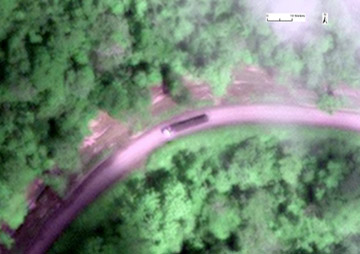 Large truck caught on high resolution satellite on oil road in Yasuni. Image courtesy of Finer, Pappalardo, Ferrarese, De Marchi (2014). |
In 2007, the government approved an Environmental Impact Study (EIS) based on this new roadless design, which included helicopters flying equipment in and out and a thin corridor through the forest for the oil pipeline, known as a “flowline corridor.” At the time the permit was approved for a different oil company, Petrobras. Then in 2009, the concession was handed from Petrobras to Petroamazonas; but in taking over the concession, Petroamazonas also agreed to its conditions.
“The scientists of course didn’t want to see more oil development in Yasuni, but at least [we] felt good that if it did happen it would be roadless…so that’s why it was such a shock, when in 2012, we started getting reports that Petroamazonas, who took over the block, was building a road. These reports came from National Geographic reporters and photographers,” Finer said.
A major article in National Geographic on Yasuni National Park led to aerial photography over remote Block 31, which appeared to show large-scale roads slashing through the forest.
“These aerial photos weren’t totally conclusive because they were taken right at the time of construction of the flowline route so things of course looked raw,” said Finer. “So we decided to buy high resolution imagery and look at the scene one year later, September 2013. It is in these images that we can confirm that it is an access road because the route is covered in vehicles and permanent structures like bridges and culverts.”

Map of oil blocks in Yasuni. Map courtesy of Image courtesy of Finer, Pappalardo, Ferrarese, De Marchi (2014).
Analyzing high-resolution imagery of the area, Finer and colleagues found that Petroamazonas had broken a number of sections of their agreement. According to the report, Petroamazonas is using its flowline corridor as a major access road. On average, this corridor is 2.5 times larger than stipulated by the EIS with 94 percent of the corridor larger than the maximum size of 15 meters. Moreover, only one percent of this road is less than 10 meters, the recommended size in the EIA. In addition, Petroamazonas was allowed to cut 94.5 hectares of forest by the government, but it has actually cut more than 163 hectares or 72 percent above its allowance. Finally, the EIS stipulated no permanent bridges—only wooden structures that could be easily removed—however the satellite imagery shows at least one major, steel bridge crossing the Pindoyacu River.
The discovery that Petroamazonas has broken several of the requirements of its Block 31 license is timely since the government has just granted the oil company a license to drill in the even more controversial ITT Block, which covers about 100,000 hectares or 10 percent of the park.
Lying on the western edge of the park, ITT—which has been dubbed the most biodiverse place on the planet—was the center of a novel experiment in conservation that ultimately failed.
 Vehicles drive along oil road cutting through deep Yasuni bucking the government license. Image courtesy of Finer, Pappalardo, Ferrarese, De Marchi (2014). |
In 2007, the Ecuadorian government announced it would forgo drilling in ITT if the international community compensated it with $3.6 billion, or half the expected revenue from the oil drilling. Known as the Yasuni ITT-Initiative, it was billed as a way to mitigate climate change by leaving 846 million barrels of oil in the ground, preserve species, and safeguard indigenous groups who had chosen voluntary isolation. The initiative was controversial, however, with some conservationists seeing it as essentially holding the park to ransom, while many others viewed it as among the most innovative and promising initiatives in contemporary conservation.
But last year the government killed the initiative after the international community pledged $330 million or less than 10 percent of the total. Still that wasn’t the end. Activists across Ecuador gathered around 850,000 signatures to kick off a national referendum on whether-or-not to drill in ITT. However last month, the National Electoral Council tossed out over 60 percent of the signatures claiming most were either repeats or fakes. Two weeks later, the government approved the drilling license for Petroamazonas, a license which has the same stipulations as those in Block 31.
But Finer says given the revelations of Petroamazonas’ operations in Block 31, the Ecuadorian government must “immediately…revisit their recent decision to grant the same type of license for ITT.”
In the meantime, activists intend to appeal the decision by the National Electoral Council, citing “fraud.”

Photo of the secret oil access road with in Yasuní’s Block 31. Photo © Ivan Kashinsky. Click image to enlarge.
Citations:
- Finer, Pappalardo, Ferrarese, De Marchi (2014) High Resolution Satellite Imagery Reveals Petroamazonas Violated Environmental Impact Study by Building Road into Yasuní National Park.
Related articles
After throwing out referendum, Ecuador approves oil drilling in Yasuni’s embattled heart
(06/02/2014) By 2016, oil drilling will begin in what scientists believe is the most biodiverse place on the planet: remote Yasuni National Park. Late last month, Ecuador announced it had approved permits for oil drilling in Yasuni’s Ishpingo-Tambococha-Tiputinin (ITT) block, an untouched swathe of primary rainforest covering around 100,000 hectares or about 10 percent of the park.
Stolen information may derail Yasuni drilling referendum

(04/30/2014) Environmental activists in Ecuador are accusing the country’s National Electoral Council of breaking into sealed boxes to interfere with completed petitions that call for a referendum on oil drilling in the Amazonian region of Yasuní. The environmentalists had spent six months collecting signatures to oppose Rafael Correa’s plans to extract oil in the eastern portion of the country.
Ecuador will have referendum on fate of Yasuni after activists collect over 700,000 signatures
(04/16/2014) In what is a major victory for environmentalists, campaigners with United for Yasuni have collected 727,947 signatures triggering a national referendum on whether or not oil drilling should proceed in three blocs of Yasuni National Park in Ecuador.
Featured video: celebrities speak out for Yasuni
(04/02/2014) A group of celebrities, including recent Academy Award winner Jared Leto, Law and Order‘s Benjamin Bratt, and Kill Bill‘s Daryl Hannah, have lent their voices to a new Public Service Announcement to raise signatures to protect Ecuador’s Yasuni National Park from oil drilling.
Oil or rainforest: new website highlights the plight of Yasuni National Park
(03/20/2014) A new multimedia feature story by Brazilian environmental news group, ((o))eco, highlights the ongoing debate over Yasuni National Park in Ecuador, arguably the most biodiverse place on the planet.
High-living frogs hurt by remote oil roads in the Amazon

(01/14/2014) Often touted as low-impact, remote oil roads in the Amazon are, in fact, having a large impact on frogs living in flowers in the upper canopy, according to a new paper published in PLOS ONE. In Ecuador’s Yasuni National Park, massive bromeliads grow on tall tropical trees high in the canopy and may contain up to four liters of standing water. Lounging inside this micro-pools, researchers find a wide diversity of life, including various species of frogs. However, despite these frogs living as high as 50 meters above the forest floor, a new study finds that proximity to oil roads actually decreases the populations of high-living frogs.
Ecuador’s government shuts down indigenous rights organization over oil battle
(12/10/2013) Last Wednesday, the government of Ecuador shutdown the indigenous rights NGO, Fundación Pachamama, in Quito over the group’s opposition to oil drilling in indigenous areas. More than a dozen government officials showed up at Pachamama’s office with a resolution by the Ministry of Environment that officially dissolved the organization, the first such moved by the government which in June passed an Executive Decree that tightened governmental oversight of the country’s NGOs.

(11/13/2013) The plan from Ecuador’s government was simple: Pay us and we won’t destroy the planet’s most extraordinary ecosystem. Dubbed the Yasuni-ITT initiative, the plan called upon developed nations to pay for protecting Ecuador’s Yasuni National Park from oil companies. Now, a recent study claims the plan was fraught with flaws as basic as drawing lines on a map.

(11/12/2013) In August 2012, professional photographers Ivan Kashinsky and Karla Gachet were on assignment for National Geographic in Yasuní National Park, home to arguably the most biodiverse rainforest in the world. While there, they happened to take an aerial shoot above an area known as Block 31 (see Map), a controversial oil concession located in the heart of the park, at the precise moment that the national oil company, Petroamazonas, was secretly building a new oil access road.



